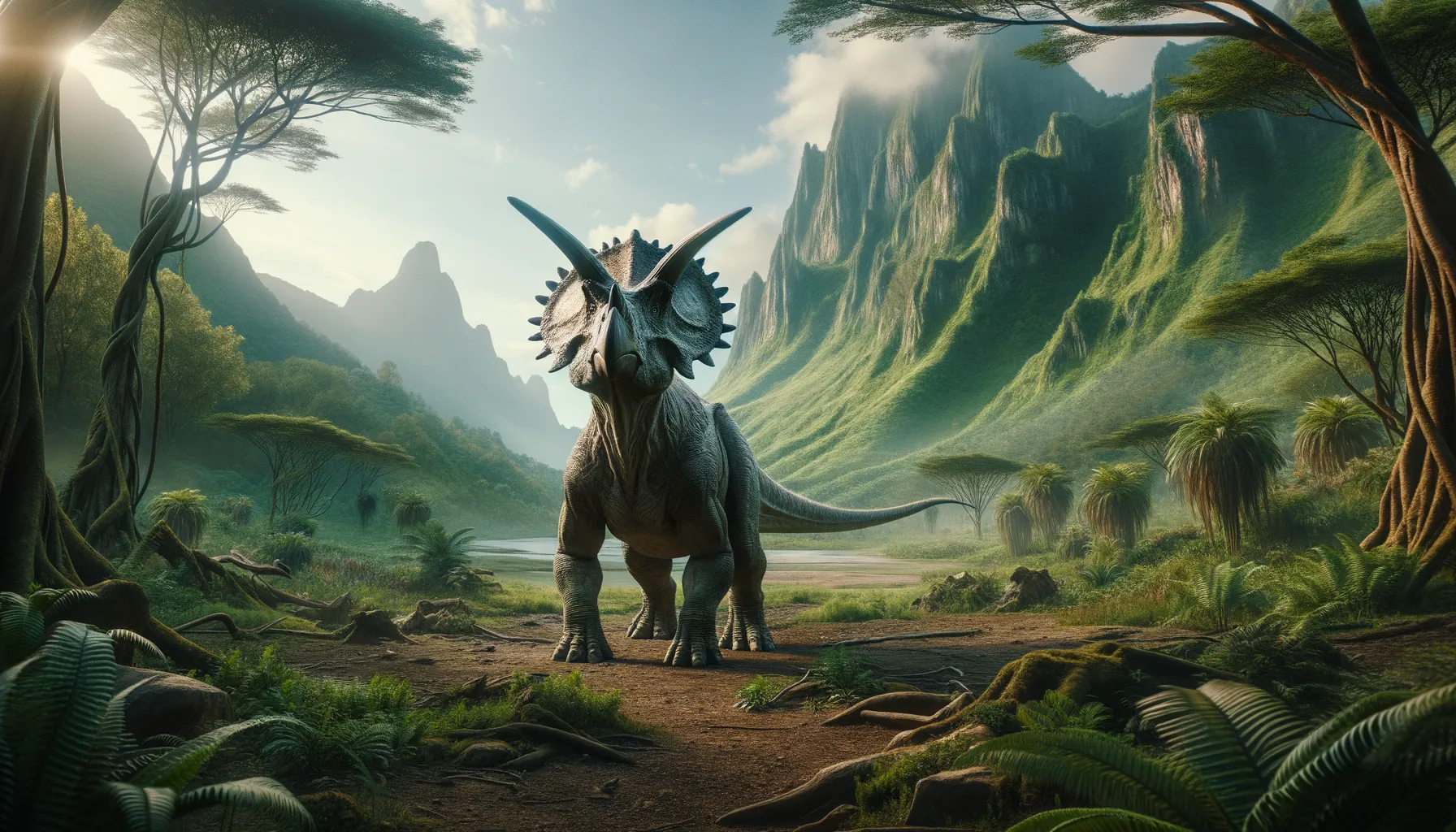
Kulceratops
The horned giant of the ancient steppe.
Period
Cretaceous
Length
Measured about 5 meters long.
Height
Stood approximately 2 meters tall at the shoulders.
Weight
Weighed around 1,000 to 1,500 kilograms.
Kulceratops was a herbivorous dinosaur known for its distinctive horned face, similar to other ceratopsians. It roamed the Earth during the Cretaceous period, primarily in what is now Central Asia. Its fossils have helped paleontologists understand the diverse range of ceratopsian dinosaurs and their adaptations. Despite limited fossil remains, studies suggest it had a robust build and several unique features that distinguished it from its relatives.
Diet
Kulceratops was a herbivore, feeding primarily on low-lying plants and shrubs. Its beak-like mouth was well-suited for clipping vegetation efficiently.
Hunting
As a herbivore, Kulceratops did not hunt other animals. Instead, it foraged for various plants, using its keen sense of smell to locate food sources. Its large size served as a deterrent against predators, reducing its need to flee or fight.
Environmental challenges
Kulceratops faced challenges from predatory dinosaurs looking for prey. It also had to adapt to occasional climate fluctuations, which could affect food availability. Additionally, competition with other herbivores for resources was a constant pressure, requiring efficient feeding strategies.
Speed
Likely slow-moving due to its bulky body.
Lifespan
Estimated lifespan of around 40 to 60 years.
First discovery
First discovered in Central Asia in the 1990s.
Fun Facts
- Kulceratops is a lesser-known dinosaur from the Cretaceous period, known for its distinct horned face.
- The name 'Kulceratops' means 'Kul's horned face,' named after the place where its fossils were first discovered.
- This dinosaur was related to the more famous Triceratops, sharing similar features like the frilled head and horned face.
- Kulceratops was relatively small compared to some of its ceratopsian cousins, making it quite unique.
- The fossils of Kulceratops have helped scientists understand more about the diversity and evolution of horned dinosaurs during its time.
- Kulceratops lived in what is now Uzbekistan, giving us clues about the ancient environment of Central Asia.
- Despite its small size, Kulceratops likely had a robust body and strong limbs, which were typical features of ceratopsian dinosaurs.
Growth and Development
Kulceratops likely experienced rapid growth in its early years to avoid predation. As it matured, its distinctive frills and horns continued to develop, reaching full size in adulthood. The rate of growth and development would have depended on environmental conditions and food sources.
Habitat
Kulceratops thrived in a mixed environment of open plains and forested areas. It relied on the vegetation-rich surroundings for sustenance, utilizing its strong jaws to process tough plant material. Seasonal changes might have prompted movement to areas with more abundant resources.
Interaction with other species
Kulceratops may have shared its environment with other herbivorous dinosaurs, engaging in competition for the same food sources. It also had to stay alert to potential threats from carnivorous species. Social interactions likely occurred within its own species, possibly forming small herds for mutual protection.
Natural lifespan
Kulceratops had a natural lifespan of around 40 to 60 years in the wild.
Reproduction
Kulceratops likely reproduced by laying eggs, as with most dinosaurs. Nesting sites would have been carefully selected for safety from predators and environmental exposure. Parental care might have been minimal post-egg laying, although some protection of the nest could have occurred.
Social behaviour
Kulceratops may have exhibited social behavior, forming herds to improve survival chances against predators. Social interactions could have included vocalizations or postural displays to establish dominance or communicate threats.
Fossil locations
Fossils of Kulceratops have been found primarily in Central Asia, providing important information about its existence. These discoveries contribute to understanding the distribution of ceratopsian dinosaurs in prehistoric ecosystems.
